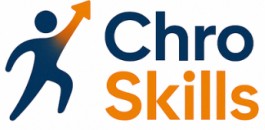
Understanding the Evolving Role of a CHRO
The Expanding Responsibilities of a CHRO
The role of a Chief Human Resources Officer (CHRO) has significantly evolved over the years. Traditionally seen as the head of personnel management, today's CHRO is a strategic partner in driving business success. This transformation is largely due to the increasing importance of talent management systems (TMS) in aligning talent with organizational goals. As businesses strive for high performance, the CHRO's role in managing and developing the workforce has become more critical than ever.
Strategic Leadership in Talent Management
CHROs are now expected to lead strategic initiatives that enhance talent management. This involves not only managing current employees but also planning for future needs through effective succession planning and career development. By leveraging data and analytics, CHROs can make informed decisions that support the organization's long-term objectives. This strategic approach helps organizations maintain a competitive edge by ensuring they have the right people in the right roles at the right time.
Embracing Digital Transformation
In the digital age, CHROs must integrate technology with human resources to create a seamless employee experience. This includes utilizing tools that offer real-time insights into performance management and goal setting. By embracing digital solutions, CHROs can implement cost-effective strategies that enhance the overall management system. This digital transformation is crucial for aligning talent with business objectives and fostering a culture of continuous improvement.
Fostering a Culture of Development
One of the key responsibilities of a CHRO is to build a culture that prioritizes continuous learning and development. This involves creating career paths that encourage employees to grow within the organization. By implementing best practices in talent management, CHROs can support high performance and employee satisfaction. This approach not only benefits the organization but also enhances the career prospects of its workforce.
For more insights on mastering employee assessment and key skills for CHROs, visit our detailed guide.
Key Skills for Effective Talent Management
Critical Skills for the CHRO Role
Understanding the pivotal role of a Chief Human Resources Officer (CHRO) in talent management means recognizing the various skills required to drive an organization's success. To support the business and its workforce effectively, a CHRO needs to master a blend of traditional HR expertise and modern innovations.
Here are some key skills for effective talent management that can help organizations achieve high performance:
- Strategic Thinking: CHROs must align talent management with the organization’s business objectives. This involves using data-driven insights to shape strategies for recruitment, succession planning, and workforce development.
- Performance Management: They need to implement systems that enhance employee performance through real-time feedback and goal setting, ensuring a high-performance culture.
- Innovation in Career Development: Creating clear career paths and utilizing digital tools to support career development can help retain top talent, thus benefiting both the employees and the organization.
- Adaptability and Data Utilization: In this digital age, leveraging data to inform decisions and adapt to the current trends is imperative. The ability to harness data effectively supports overall talent management systems (TMS).
- Building a Culture of Continuous Learning: Encouraging a learning-focused environment is vital for employee growth and organizational success. By mastering the art of training facilitation, CHROs can foster a culture of continuous learning and development mastering the art of training facilitation.
With these capabilities, CHROs can effectively harness talent management practices that not only support high performance but also ensure the organization's capability to navigate the rapidly evolving business landscape.
Integrating Technology with Human Resources
Embracing Digital Transformations in HR
Integrating technology with human resources is no longer a mere trend but a necessity for organizations aiming to thrive in the modern business landscape. As companies seek ways to streamline their talent management processes, they often turn to digital solutions to enhance performance and development. An effective talent management system (TMS) serves as a critical tool in this endeavor, helping organizations to manage workforce data effectively while supporting career development and succession planning initiatives.
The integration of technology is pivotal in achieving high performance and aligning talent goals. By leveraging digital platforms, companies can implement best practices that foster an enriching employee experience. Such platforms often provide real-time insights, which are valuable for performance management and ensuring the organization remains agile in addressing current and future needs.
Furthermore, the deployment of cost-effective software solutions allows HR teams to focus on strategic aspects such as employee development and aligning career paths with business objectives. Tools like social media and advanced analytics facilitate the identification and nurturing of top talent, ensuring organizations retain their competitive edge. Integrating these technologies also supports data-driven decision-making, empowering HR professionals to implement initiatives that promote a culture of continuous learning and growth.
Therefore, leveraging technology in HR isn't just about automating processes—it embodies the holistic alignment of business goals with talent strategies, enhancing both individuals and the organization as a whole. By embracing these digital transformations, companies are better positioned to tackle current challenges and navigate future developments in talent management.
Building a Culture of Continuous Learning
Fostering a Learning-Oriented Environment
In today's fast-paced business landscape, organizations must prioritize the development of a culture that encourages continuous learning. This approach not only enhances the skills of the workforce but also aligns talent with the evolving needs of the business. A learning-oriented environment supports career development and helps organizations retain top talent by offering clear career paths and opportunities for growth.
Implementing Effective Learning Systems
To build a culture of continuous learning, it's crucial to integrate a robust talent management system (TMS) that facilitates real-time learning and development. These systems should be cost-effective and user-friendly, providing employees with access to a variety of learning tools and resources. By leveraging digital platforms, organizations can offer free trials and personalized learning experiences that cater to individual career goals and performance needs.
Encouraging Employee Engagement
Employee engagement is a key component of a high-performance culture. Organizations can enhance engagement by aligning talent with strategic business goals through effective goal setting and performance management. Social media and other digital tools can be used to foster communication and collaboration, creating a more connected and motivated workforce.
Best Practices for Continuous Learning
- Encourage open communication and feedback to support career development and succession planning.
- Utilize data-driven insights to identify skill gaps and tailor learning programs accordingly.
- Promote a growth mindset by recognizing and rewarding learning achievements.
- Provide mentorship and coaching opportunities to guide employees on their career paths.
By focusing on these best practices, organizations can create a dynamic and adaptable workforce that is well-equipped to meet current and future challenges. This approach not only enhances employee experience but also drives business success by ensuring the continuous development of management talent.
Navigating Challenges in Talent Management
Addressing the Complexities of Talent Management
In today's fast-paced business environment, organizations face numerous challenges in managing their talent effectively. A key issue is aligning talent with the organization's strategic goals. This requires a robust talent management system (TMS) that supports real-time data analysis and performance management. By leveraging digital tools, organizations can enhance their ability to track and develop high-performance individuals, ensuring that top talent is nurtured and retained.
Overcoming Workforce Development Hurdles
Workforce development is another critical area where challenges abound. Organizations must create career paths that not only attract but also retain talent. This involves implementing best practices in succession planning and career development, which are essential for maintaining a competitive edge. Effective goal setting and performance management systems are vital in this regard, helping organizations to align talent with business objectives and support career growth.
Cost-Effective Solutions for Talent Management
Cost management is a perennial concern for organizations, especially when it comes to talent management. Implementing cost-effective solutions without compromising on quality is crucial. This can be achieved by integrating free or low-cost digital tools that enhance the employee experience and streamline management processes. Organizations can also benefit from offering free trials of new systems to evaluate their effectiveness before full-scale implementation.
Adapting to Social Media and Digital Trends
Social media and digital trends present both opportunities and challenges for talent management. Organizations must adapt to these changes by using social media platforms to engage with potential candidates and enhance their employer brand. Additionally, leveraging digital tools can help in creating a more dynamic and interactive employee experience, which is crucial for attracting and retaining top talent.
Supporting Veterans Affairs and Diversity Initiatives
Finally, organizations must navigate the complexities of supporting veterans affairs and diversity initiatives. This involves creating an inclusive environment that values diverse perspectives and experiences. By doing so, organizations can tap into a broader talent pool and foster a culture of innovation and high performance.













